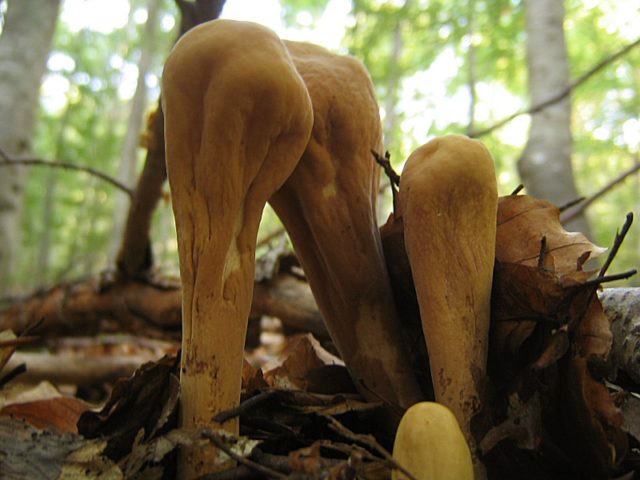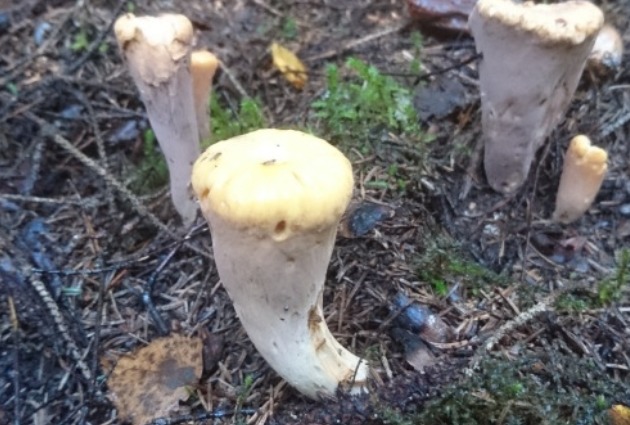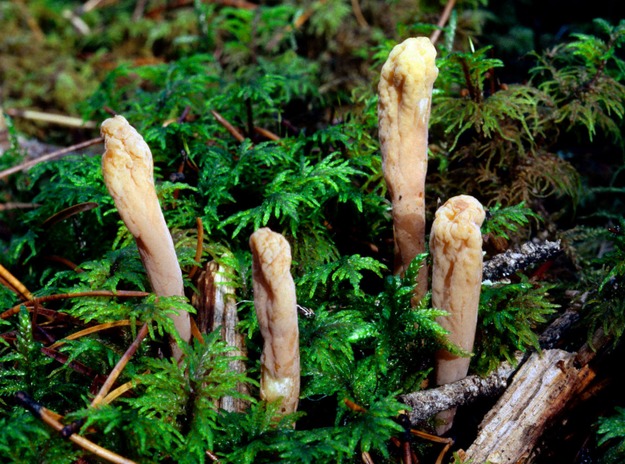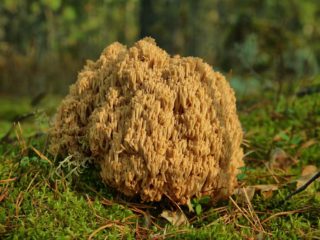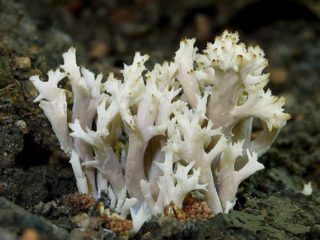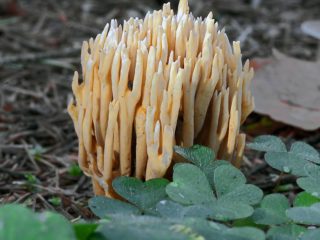Content
The clavate horned belongs to the Clavariadelphus family (Latin - Clavariadelphus pistillaris). The correct name of the species is Pistil Horned. It was nicknamed club-shaped for the appearance of the fruiting body, which does not have a separate leg and cap, but resembles a small club. Another name is the Horn of Hercules.
Where clavate horns grow
Horned beetles can be found in August and September in deciduous forests. They are very rare and grow singly or in small groups. Listed in the Red Book of Russia. They like to grow in warm, sun-warmed places, most often they grow in the southern regions. Form mycorrhiza with trees, mainly beech.
In the Krasnodar Territory, mushrooms of this species can sometimes be found in the forest in October. They love moist fertile soil, they are found along river banks, not only under beech, but also under hazel, birch and linden trees.
What do clavate slingshots look like?
The fruit body of these mushrooms is clavate, it can grow up to 20 cm in height and up to 3 cm in width. Longitudinal wrinkles are visible on it if it is an adult specimen. Young pistil horns are smooth. Spore white or light yellow powder.
The cap and leg are not pronounced. It is a single formation resembling a cylinder, which tapers at the bottom. Has a yellow-reddish color and a light base. The pulp is light spongy, turning brown on the cut. If you touch the pulp, it takes on a wine tint. Young mushrooms are dense, with a smooth surface, with age they become looser, and easily squeezed in the hand, like a sponge.
Is it possible to eat clavate horns
Clavate horns are conditionally edible species. They are rarely found in nature and have been little researched. There were no cases of poisoning after their use.
Authoritative reference books classify this species as an edible mushroom of the 4th category, which has a low nutritional value.
Mushroom taste
Clavate horns do not have a pronounced odor; after cooking, they sometimes taste bitter. Young specimens are most delicious, they can be salted or fried with spices.
Most often, lovers of "quiet hunting" bypass this species of mushrooms. They are not harvested because of the bitter taste. To reduce bitterness, collected specimens should be washed well and soaked in cold water for several hours.
False doubles
Truncated horns look like the described species. They are distinguished by a flat top of the fruiting body and a more pleasant, sweet taste. They grow in coniferous forests. They are rare on the territory of Eurasia, more often they can be found in North America. They are conditionally edible.
Another edible counterpart is the reed horn or Clavariadelphus ligula.It is a small mushroom, up to 10 cm high. It has an elongated club-shaped shape with a rounded or spatulate top. Young specimens are smooth, later they acquire longitudinal folds, and the cream color turns to orange-yellow. This species is more common than clavate horned, but it also has a low nutritional value, it is used for food after boiling.
Collection rules
Clavate horns are included in the Red Book of Russia, belong to rare mushrooms, and require protection. In other European countries, where they are more common and not protected by the state, they are harvested in August and September.
Horns found among the fallen leaves on the forest edges, it is advisable to twist out of the mycelium with your hands. This method of collection allows you to keep it intact, it does not rot, and continues to bear fruit successfully. Having unscrewed the mushroom from the ground, the hole is covered with a thin layer of soil so that moisture does not get inside.
Use
Clavate horns are rarely used for the preparation of culinary dishes and winter preparations. They are edible, though, if they are salted, boiled, or pickled. There are several reasons for the lack of popularity among fans of "quiet hunting":
- bitter taste of the pulp;
- rarity of the species;
- ripening in season when there are many other, more delicious mushrooms.
Despite the small popularity of horned animals, they are included in the Red Data Books of many countries. The reason for the decline in their numbers is the deforestation of beech forests, a favorite habitat. Cannot be harvested in 38 regions of Russia, Ukraine, Wales and Macedonia.
Conclusion
Horned clavate is a rare conditionally edible mushroom. It is not collected by those who know that it is included in the Red Book. The taste is more for an amateur, the pulp can be very bitter, there is no pronounced smell. It has no great nutritional value, it is almost impossible to see it in the forest.

